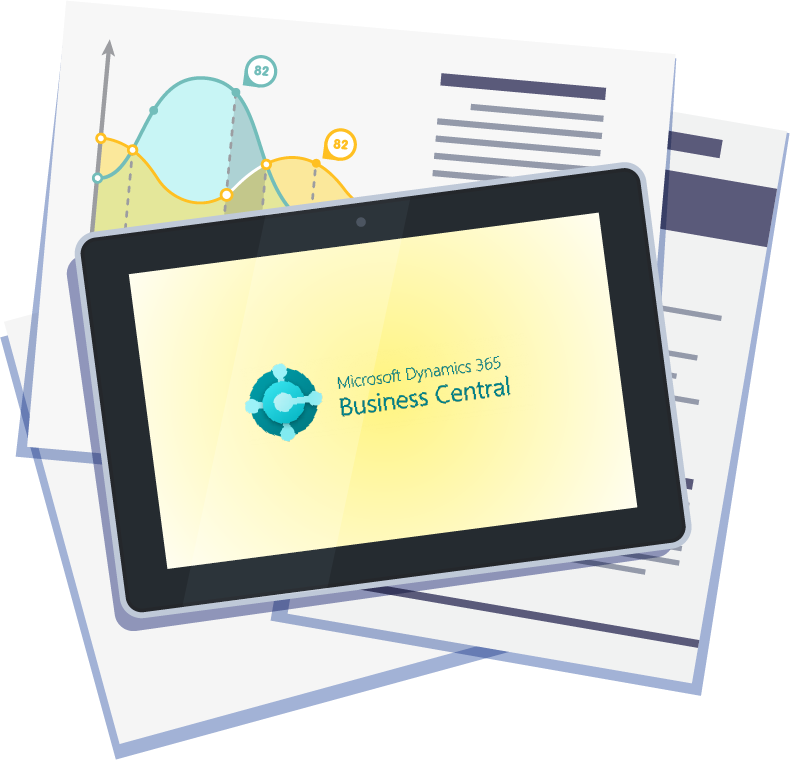Table of Content
Share This Article
- Reading Time: 7 Minutes
- Published: March 22, 2023
- Last Updated: January 18, 2025
For any business, understanding its finances is the key to success. And when it comes to finances, accounts receivable is one of the most important facets of your financial health, yet it can be daunting for beginners. Learning the ins and outs of accounts receivable can overwhelm business owners. Are you a small business owner or entrepreneur looking to understand accounts receivable for your business better? Are you struggling to make sure that you are taking advantage of all the benefits it offers? Are you confused about using in-house personnel or relying on outsourced accounts receivable services? We have prepared this beginner’s guide to help you break down the basics of accounts receivable and get started!
What is Accounts Receivable?
Accounts receivable is the money owed to your business by its customers. This could be in the form of invoices that have not yet been paid, or it could be from services that have been rendered but not yet billed. Either way, it is important to keep track of this money so that you can follow up with customers and ensure that you are getting paid in a timely manner.
There are a few different ways to track your accounts receivable. You can do it manually, using spreadsheets or software specifically designed for tracking receivables. Or, you can outsource this task to a bookkeeping or accounting services provider.
Whichever method you choose, ensure you regularly review your accounts receivable and take action when necessary. This will help you keep tabs on your cash flow and ensure that you are paid promptly for your products or services.
What Are The Steps Involved in The Accounts Receivable Process?
When it comes to accounts receivable, every business must follow some steps to complete the AR process. These steps define the lifecycle of a business’s receivables. Be it the in-house accounts receivable team or the outsourced accounts receivable services provider, understanding these steps is crucial to have an efficient accounts receivable process. Let us look at these steps in detail:
Step 1: Purchase order from a customer
Step 2: Checking and approving the customer’s creditworthiness
Step 3: Sending the invoice to the customer
Step 4: Managing collections
Step 5: Investigating and tackling any existing issues
Step 6: Writing off any uncollectible business debts
Step 7: Processing the payment
Step 8: Post the payments received to the corresponding invoices in the books of accounts

How Does Accounts Receivable Impact Your Business?
Accounts receivable is the amount of money that a company has coming in from its customers. This can be in the form of invoices, loans, or other forms of credit. It is important to keep track of this number because it can greatly impact your business. If you are not careful, you could end up with a lot of debt and insufficient cash to cover it. This could lead to bankruptcy.
You can avoid all of this by keeping a close eye on your accounts receivable. Ensure you send out invoices as soon as possible and collect payments promptly. You can also offer discounts for early payments to encourage your customers to pay on time. Doing this will ensure you have the cash you need to keep your business running smoothly. You can also choose automation to help you overcome numerous accounts receivable challenges.
The Benefits of Efficient Accounts Receivable Management
Account receivable (AR) management is critical to success in any business. The AR department is responsible for ensuring that customer invoices are paid in a timely manner, which directly impacts the company’s cash flow. An efficient AR process can mean the difference between a thriving business and one that struggles to make ends meet.
Whether you manage your accounts receivables internally or with the help of an outsourced accounts receivable services provider, there are many benefits of efficient AR management, including:
- Improved cash flow: When invoices are paid on time, businesses have more money available to reinvest in the company or pay other debts. This improved cash flow can help businesses keep up with growth and avoid financial problems down the road.
- Reduced accounting and administrative costs: An efficient AR process requires less time and resources to manage, which reduces accounting and administrative costs. These savings can be used to invest in other business areas or reduce overhead costs.
- Enhanced relationships with customers and vendors: When invoices are paid on time, businesses build trust with their customers and vendors. This trust can lead to repeat business and improved payment terms from vendors, both of which can improve the bottom line.
- Better decision-making: With accurate and up-to-date information about what is owed to the company, decision-makers can more easily assess risk and decide where to allocate resources. This improved information also makes spotting trends and taking advantage of opportunities easier.
Improving AR management can benefit any business, regardless of size or industry. By streamlining the process and leveraging technology, businesses can save time and money and ensure their customers are always happy.
How to Efficiently Manage Your Accounts Receivable Process?
Assuming you are using double-entry accounting, your receivables are likely tracked in two places: your customer ledger and your accounts receivable (AR) aging report. Depending on the size of your business, you may also have a dedicated in-house AR accountant or bookkeeper who oversees this area or hire help from outsourced accounts receivable management services.
In any case, keeping close tabs on who owes you money and how much they owe is important. That way, you can make informed decisions about chasing down payments and keeping tabs on outstanding invoices.
Here Are a Few Tips For Managing Accounts Receivable:
- Get organized: The first step to effective receivables management is getting organized. Make sure you have a system in place for tracking invoices and payments. This might mean investing in accounting software or simply creating a well-organized filing system. Either way, taking the time to get organized will pay off in the long run.
- Stay on top of invoicing: If you want to get paid in a timely manner, it is important to stay on top of invoicing. Send out invoices when goods or services are rendered, and include clear payment terms. That way, there is no confusion about when payment is due. You can also send automatic reminders for overdue invoices using accounting software or billing service.
- Keep accurate records: This includes invoices, customer contact information, and payment history. This will help you keep track of what is owed and to whom, as well as identify any late payments.
- Monitor customer payments: Your next step should be to monitor customer payments and send out reminders for overdue invoices. This might mean manually checking your AR aging report or leveraging accounting software to automate the process. Depending on your business, you may also want to set up a procedure for handling late payments, such as charging interest or levying fees on overdue accounts.
- Set up automatic payments: If possible, set up automatic payments for your customers so that they can pay their invoices automatically each month. This will help ensure that you receive payment on time, every time.
- Offer discounts for early payment: Incentivize your customers to pay their invoices early by offering them a discount. This will help you receive payment even sooner.
- Closely monitor credit limits: It is important to closely monitor credit limits for customers who are paying over time. This will help you prevent bad debt and manage cash flow more effectively. You can also set up controls like requiring upfront deposits or limiting outstanding invoices per customer.
- Keep tabs on your outstanding invoices: Keeping track of which invoices are outstanding and following up with customers who are late in paying is crucial. This can be done manually or by using accounting software that includes an accounts receivable module.
- Use account aging reports: Account aging reports show which customers owe you money and how long the invoice has been outstanding. This information can be used to prioritize follow-up with customers who are delinquent in paying their invoices.
- Offer multiple payment options: Some customers may prefer to pay by credit card, others by check or bank transfer. The more options you offer, the more likely you will get paid quickly.

Keeping in mind all these tips and taking proper steps to keep your accounts receivable process efficient can be a time-consuming and hectic task if you manage it by yourself or with the help of in-house personnel. In-house AR management also consumes too much cost, time, and resources that can otherwise be used for other productive tasks. So, the business must move from in-house accounting to accounts receivable outsourcing with the help of an expert and experienced accounting services providers. Outsourcing is a cost-effective method that also helps save time, enhances the accuracy and security of data, and reduces the strain on the shoulders of the in-house personnel.
Conclusion
Accounts receivable is an important part of the financial flow for any business. When managed properly, it can be a valuable source of income and improve overall cash flow. Understanding accounts receivable is essential to managing your finances effectively, and this guide has provided you with the basics to help you get started. Whether you are just starting out or looking to refine your approach, having a good handle on accounts receivable will set you up for success in the long run.
If you are looking for ways to enhance the efficiency of your accounts receivable process without stressing out the internal accounting team, you can go with outsourced professional accounts receivable services providers. Whiz Consulting is one such service provider with over a decade of experience in managing the financials for numerous businesses from different industries. You can contact us to help you tackle your accounting issues and make it easier for you to manage your different processes, such as accounts receivable, accounts payable, payroll, etc.

Get customized plan that supports your growth

Thousands of business owners trust Whiz to manage their account
Let us take care of your books and make this financial year a good one.








